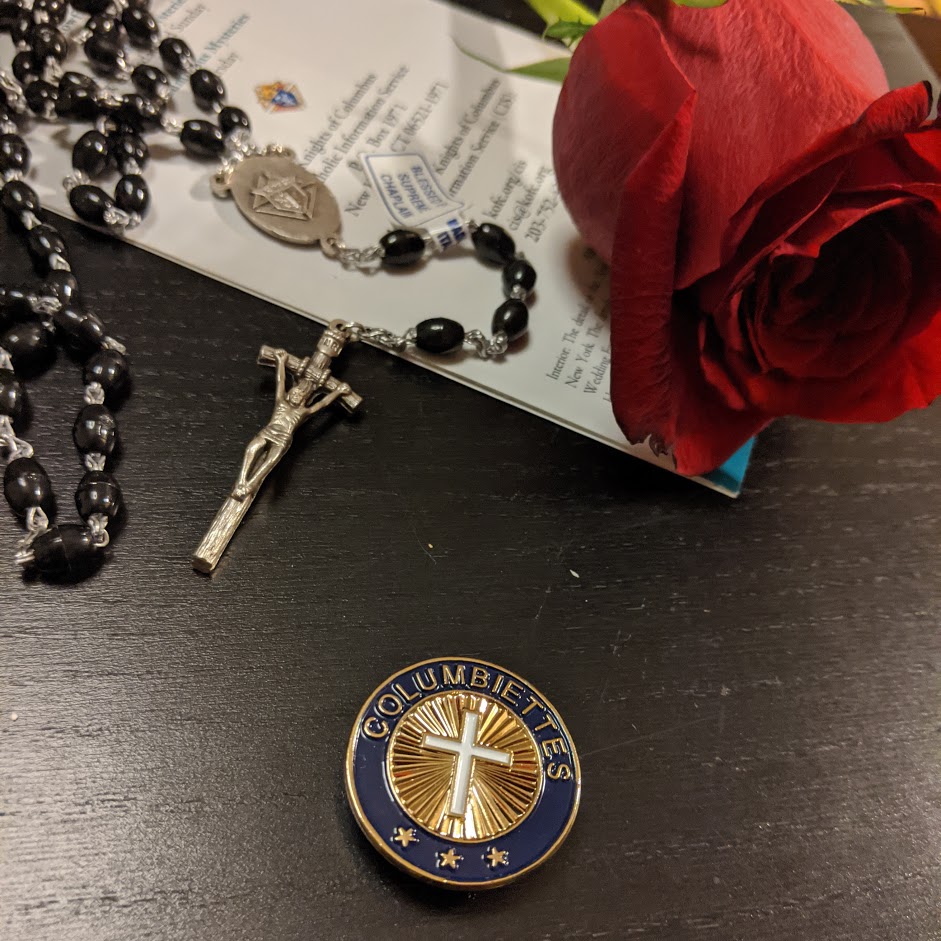Months ago, I spied a callout in the church bulletin for the Columbiettes. I didn’t live in the area at the time, so it didn’t make much sense to express interest. There was an auxiliary closer to home, but I didn’t want to commit to an area I didn’t see as permanent.
I knew little about the Knights of Columbus, only that my staunchest liberal friends didn’t like them. But when I did my own research, I found nothing amiss. When the Knights attended Mass in their emblazoned blazers, they were figures of respect. I attended every pancake breakfast or BBQ they hosted. And I nearly forgot about the ladies’ auxiliaries until I moved back “North.” (that is, Jersey.) So naturally, I contacted the Columbiettes as soon as I spied that bulletin callout again. They were more than happy to hear from me—I received an invitation next day for installation.
I expected some kind of info session, or FAQ, or something, but the day before installation I realized what exactly was happening. I had my membership form and dues; I was on an email chain about a members-only portion of a day that was much longer than the couple hours I’d originally planned for. This was no meet-and-greet. This was installation, and I was about to pledge myself to the Knights. Or, their female counterpart.
Not that there was any doubt I would, but I didn’t expect to meet my fellow Columbiettes the day of installation. There were a lot of people, and many who already knew each other. I’m not great at introducing myself, and get shy around new people. So the whole day was more of an introspection for me, while everyone else chatted and marveled. The ceremony wasn’t too much of a surprise for me; from the start it felt like a fraternity initiation, of which I’m a sister of two. (It’s allowed.) So I’d done this before. I knew the basics of what to expect in a ceremony. And though most college fraternities have some sort of religious foundation, it’s nothing like becoming a member of an actual religious fraternal organization.
Looking back on it now, it reminded me of joining the Church as a whole. Before committing myself to Catholicism, something was missing in my religious life that was later fulfilled in the Church. I felt something similar going through the First Degree ceremony. My other fraternities are great. I’m still highly active in one of them. But by including Jesus, and the promise to live by the Commandments of God and the Church, the ceremony was complete. Secular institutions continue to cut out God, to water down words and morality. But in doing that, they take away the very meaning of life. It feels nice, but it isn’t right. Pledging myself to God, just as I had done in Confirmation, brought meaning to everything I was experiencing that day.

So now I’m a Columbiette. Not only that, but this was also the formation of a new auxiliary, so I’m a charter member as well. It almost feels like cheating, because I didn’t do anything in the start-up. I just showed up, without any introduction, and without doing any of the work.
But I’ll make up for that now. It’s a new group, so there’s a lot to create and figure out. I’ll get involved in my new community, and help those in need. We have our first meeting next week, and an upcoming meet-and-greet with the Knights. I’ll show up to our events, and those of our brother Knights, wearing my badge with pride.

